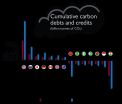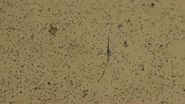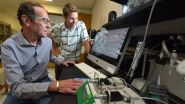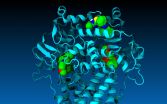INFORMATION:
Publication: Resin-acid derivatives as potent electrostatic openers of voltage-gated K channels and suppressors of neuronal excitability av N E Ottosson, X Wu, A Nolting, U Karlsson, P-E Lund, K Ruda, S Svensson, P Konradsson & F Elinder 2015. Scientific Reports 5, Article number: 13278. doi:10.1038/srep13278
Resin may provide medicine against epilepsy
2015-09-08
(Press-News.org) Sticky resin from conifers contains substances that could relieve or cure epilepsy. Researchers at Linköping University have synthesized and tested 71 substances known as resin acids, of which twelve are prime candidates for new medicines.
"Our goal is to develop some of the most potent substances into medicines," says Fredrik Elinder, professor of molecular neurobiology and head of the study, which was newly published in Nature's open-access periodical Scientific Reports.
Professor Elinder is an expert on the function of ion channels - the pores in the cell membrane that allow the vital transport of charged ions between the cell's interior and its surroundings, making nerve and cardiac cells electrically excitable. Illnesses such as epilepsy, cardiac arrhythmia and chronic pain are caused by the excitability of nerve or cardiac cells being far too high.
Back in the 1940s, Swedish researchers discovered a local anaesthetic, lidocaine, that targeted ion channels. Like many of today's medicines against epilepsy, it worked by blocking channels selective for sodium ions. The problem is that many patients do not respond properly to the treatment, and that it has side effects.
"Our substances act instead on potassium channels, where they keep the door open via an electrostatic mechanism, thereby curbing the harmful nerve activity," Professor Elinder says.
The research group had previously discovered that polyunsaturated fatty acids acted via this mechanism, but were looking for more specific and more powerful substances. Resin acids - found naturally in resin - are fat-soluble and electrically charged, properties that are necessary to be able to bind to and pull the ion channels' "doorknobs". A collaboration with LiU chemists Professor Peter Konradsson and principal research engineer Xiongyu Wu was the key to success in the project. Based on the original molecule, dehydroabietic acid, 71 new molecules were created with small variations in the structure. These were tested on a hypersensitive potassium channel that was expressed in frog eggs.
"Twelve of the molecules were more potent than anything we'd looked at earlier," says doctoral student Nina Ottosson, who designed the test channel and measured the electrical currents that open and close the door to the ion channel.
Her results were later verified in nerve cells from mice.
The researchers have now submitted patent applications prior to continued developmental work.
"It's reasonable for us to be the ones developing the concept further, refining our ideas. But further on, others will have to take over," Professor Elinder says.
ELSE PRESS RELEASES FROM THIS DATE:
Realizing carbon nanotube integrated circuits
2015-09-08
Individual transistors made from carbon nanotubes are faster and more energy efficient than those made from other materials. Going from a single transistor to an integrated circuit full of transistors, however, is a giant leap.
"A single microprocessor has a billion transistors in it," said Northwestern Engineering's Mark Hersam. "All billion of them work. And not only do they work, but they work reliably for years or even decades."
When trying to make the leap from an individual, nanotube-based transistor to wafer-scale integrated circuits, many research teams, including ...
NASA sees Typhoon Kilo maintaining its eye
2015-09-08
Typhoon Kilo continues to thrive in the Northwestern Pacific and imagery from NASA's Terra satellite late on September 7 showed that the storm still maintained a clear eye.
The MODIS or Moderate Resolution Imaging Spectroradiometer instrument that flies aboard Terra provided a visible-light image of Kilo on September 7 at 23:50 UTC (7:50 p.m. EDT). The image showed thick bands of thunderstorms wrapping around the eastern and northern quadrants of the visible eye.
At 0900 UTC (5 a.m. EDT) on September 9, Typhoon Kilo had maximum sustained winds near 65 knots (74.8 mph/120.4 ...
Should countries honor their climate debts?
2015-09-08
This news release is available in French.
Montreal, September 8, 2015 -- All countries have contributed to recent climate change, but some much more so than others. Those that have contributed more than their fair share have accumulated a climate debt, owed to countries that have contributed less to historical warming.
This is the implication of a new study published in Nature Climate Change, in which Concordia University researcher Damon Matthews shows how national carbon and climate debts could be used to decide who should pay for the global costs of climate ...
Texas A&M biologists zero in on 2-protein 2-step trigger for deadly scar-tissue loop
2015-09-08
Scientists at Texas A&M University have made additional progress in understanding the process behind scar-tissue formation and wound healing -- specifically, a breakthrough in fibroblast-to-fibrocyte signaling involving two key proteins that work together to promote fibrocyte differentiation to lethal excess -- that could lead to new advances in treating and preventing fibrotic disease.
A new study led by biologists Richard Gomer and Darrell Pilling and involving Texas A&M graduate students Nehemiah Cox and Rice University technician Varsha Vakil points to a naturally ...
Bats and balls, not base runners, cause worst injuries to major league catchers
2015-09-08
Contrary to popular belief, the worst injuries baseball catchers face on the field come from errant bats and foul balls, not home-plate collisions with base runners, according to findings of a study led by researchers at the Johns Hopkins University School of Medicine.
The research, done in collaboration with Baltimore Orioles trainers Brian Ebel and Richard Bancells, involved analysis of all catcher injuries during major league baseball games over a 10-year period.
A summary of the findings, published ahead of print Aug. 28 in the American Journal of Sports Medicine, ...
Hypertension in professional football players likely results from trauma on the field
2015-09-08
AUGUSTA, Ga. - The regular physical trauma that appears to put professional football players at risk for degenerative brain disease may also increase their risk for hypertension and cardiovascular disease, researchers say.
The frequent hits football players experience, particularly frontline defenders such as linemen, likely continually activate the body's natural defense system, producing chronic inflammation that is known to drive blood pressure up, according to a study in The FASEB Journal.
While strenuous physical activity clearly has its benefits, it also produces ...
New drug-like compounds may improve odds of men battling prostate cancer, researchers find
2015-09-08
Researchers at Southern Methodist University, Dallas, have discovered three new drug-like compounds that could ultimately offer better odds of survival to prostate cancer patients.
The drug-like compounds can be modified and developed into medicines that target a protein in the human body that is responsible for chemotherapy resistance in cancers, said biochemist Pia D. Vogel, lead author on the scientific paper reporting the discovery.
So far there's no approved drug on the market that reverses cancer chemotherapy resistance caused by P-glycoprotein, or P-gp for short, ...
Stem cell-derived 'mini-brains' reveal potential drug treatment for rare disorder
2015-09-08
Using "mini-brains" built with induced pluripotent stem cells derived from patients with a rare, but devastating, neurological disorder, researchers at University of California, San Diego School of Medicine say they have identified a drug candidate that appears to "rescue" dysfunctional cells by suppressing a critical genetic alteration.
Their findings are published in the September 8 online issue of Molecular Psychiatry.
The neurological disorder is called MECP2 duplication syndrome. First described in 2005, it is caused by duplication of genetic material in a specific ...
Physicians highlight ENT research to be presented during otolaryngology's annual meeting
2015-09-08
ALEXANDRIA, VA--The latest research on hearing loss, head and neck cancers, sleep apnea and other otolaryngic topics will be presented in Dallas, TX, September 27-30, at the 2015 Annual Meeting & OTO EXPO? of the American Academy of Otolaryngology--Head and Neck Surgery Foundation (AAO-HNSF), the largest annual meeting of ear, nose, throat, head and neck physicians in the world.
Abstracts of the research to be presented are now available online at http://oto.sagepub.com/content/153/1_suppl.toc. The 2015 Annual Meeting features more than 380 oral and 180 poster presentations ...
New guidelines address long-term needs of colorectal cancer survivors
2015-09-08
ATLANTA - September 8, 2015-New American Cancer Society Cancer Survivorship Care guidelines released today provide primary care clinicians with recommendations for providing comprehensive care to the estimated 1.2 million survivors of colorectal cancer in the United States.
The guidelines are the second to be published in a series of cancer survivorship care guidelines developed by the American Cancer Society. They provide guidance on identifying and managing potential physical and psychosocial long-term and late effects of colorectal cancer and its treatment, as well ...




